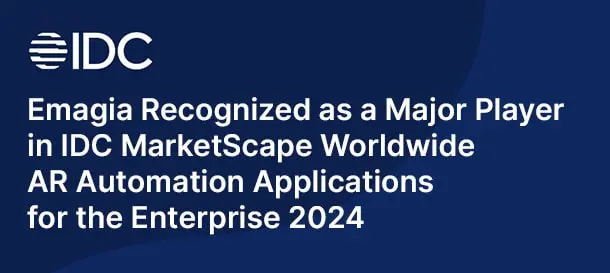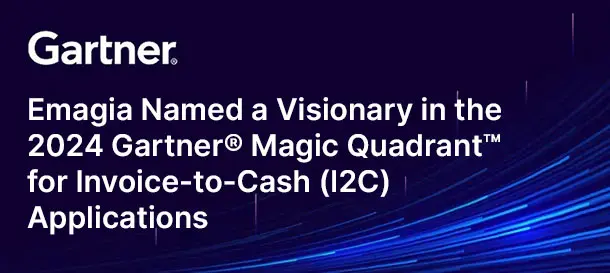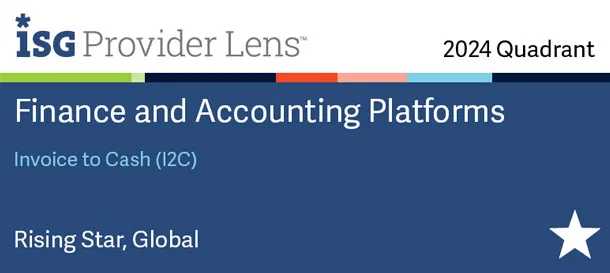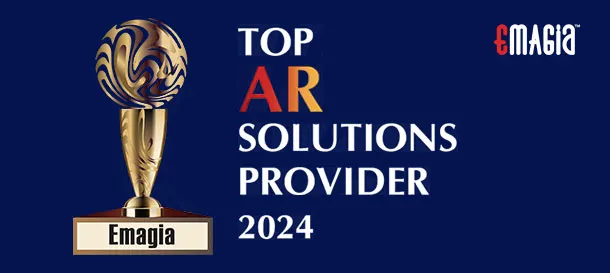In the dynamic rhythm of business, cash flow isn’t just a metric; it’s the very lifeblood that sustains operations, fuels innovation, and dictates an organization’s ability to seize opportunities and weather economic storms. While making sales is undoubtedly crucial, the true measure of financial vitality lies in how efficiently a company converts those sales into tangible, usable cash. This journey of cash, from initial investment in inventory to its return from customers, is encapsulated by a critical financial metric: the Cash Conversion Period, often referred to as the Cash Conversion Cycle (CCC).
For many businesses, managing this cycle can feel like a constant balancing act. Funds can get tied up in inventory that sits too long, or in receivables that are slow to collect, creating a drag on working capital. A prolonged cash conversion cycle can lead to liquidity challenges, increased reliance on external financing, and missed growth opportunities. Conversely, a streamlined and optimized cycle means cash is flowing freely, empowering businesses with greater financial flexibility and resilience.
This comprehensive guide will delve deep into the world of the Cash Conversion Period. We will unravel its precise definition, dissect its core components, explain its calculation, and illuminate its profound impact on your financial health. Most importantly, we will explore actionable strategies and the transformative role of modern technology in shortening your cash-to-cash conversion cycle, ensuring your business operates with optimal liquidity and strategic agility. Join us as we unlock the secrets to mastering this vital financial indicator.
Decoding the Cash Conversion Period: What Does CCC Mean?
To truly master your financial operations, understanding the Cash Conversion Period (or Cash Conversion Cycle, CCC) is paramount. It’s a key performance indicator that reveals how efficiently your business manages its working capital.
What is the Cash Conversion Period? Defining the Cycle of Cash
The Cash Conversion Period, often abbreviated as CCC, is a financial metric that measures the number of days it takes for a company to convert its investments in inventory and accounts receivable into cash, while also considering the time it takes to pay its accounts payable. In simpler terms, it calculates the length of time (in days) that cash is tied up in the operating activities of a business. A shorter CCC indicates greater efficiency in working capital management, meaning the company needs less external financing to fund its operations. This is the core ccc meaning in finance.
Think of it as the time from when you pay for raw materials or inventory until you collect cash from your customers for the finished goods. It’s a holistic view of how quickly your business generates cash from its sales and operations, making it a vital indicator of financial health and operational efficiency. This metric is also commonly referred to as the cash-to-cash conversion cycle.
The Operating Cycle: A Precursor to the Cash Cycle
Before understanding the full Cash Conversion Period, it’s helpful to grasp the concept of the operating cycle. The operating cycle measures the average number of days required to convert inventory into cash. It consists of two main components:
- Days Inventory Outstanding (DIO): The average number of days it takes to sell off inventory.
- Days Sales Outstanding (DSO): The average number of days it takes to collect cash from customers after a sale has been made.
The operating cycle calculation is simply:
$$\text{Operating Cycle} = \text{Days Inventory Outstanding (DIO)} + \text{Days Sales Outstanding (DSO)}$$
This gives you the time from purchasing inventory to receiving cash from its sale. However, it doesn’t account for how long you take to pay your suppliers, which is where the full cash cycle comes in.
The Role of Payables: Extending the Cash Cycle
The Cash Conversion Period extends the operating cycle by incorporating Days Payable Outstanding (DPO). DPO measures the average number of days a company takes to pay its suppliers. By strategically managing DPO, a company can extend the time it holds onto its cash, effectively using supplier credit to fund its operations. This is a crucial lever in optimizing the cash conversion process.
Deconstructing the Cash Conversion Period Formula
To accurately measure and manage your Cash Conversion Period, it’s essential to understand its precise formula and the calculation of each component. This section will walk you through the cash conversion cycle equation.
The Core Cash Conversion Cycle Formula
The most widely accepted cash conversion cycle formula is:
$$\text{CCC} = \text{Days Inventory Outstanding (DIO)} + \text{Days Sales Outstanding (DSO)} – \text{Days Payable Outstanding (DPO)}$$
Let’s break down each component, as each plays a vital role in the overall cash-to-cash conversion cycle.
Component 1: Days Inventory Outstanding (DIO) / Days Inventory Held (DIH)
DIO, also known as Days Inventory Held (DIH) or stock days ratio, measures the average number of days a company holds its inventory before selling it. A lower DIO indicates efficient inventory management.
$$\text{DIO} = \frac{\text{Average Inventory}}{\text{Cost of Goods Sold (COGS)}} \times \text{Number of Days in Period}$$
- Average Inventory: (Beginning Inventory + Ending Inventory) / 2 for the period.
- Cost of Goods Sold (COGS): Found on the income statement.
- Number of Days in Period: Typically 365 for annual, 90 for quarterly, or 30 for monthly.
This component highlights how long your cash is tied up in unsold goods.
Component 2: Days Sales Outstanding (DSO) / Days Receivable Outstanding (DRO)
DSO, also known as Days Receivable Outstanding (DRO), measures the average number of days it takes for a company to collect payments after a sale has been made on credit. A lower DSO indicates efficient Accounts Receivable management.
$$\text{DSO} = \frac{\text{Average Accounts Receivable}}{\text{Total Credit Sales}} \times \text{Number of Days in Period}$$
- Average Accounts Receivable: (Beginning AR + Ending AR) / 2 for the period.
- Total Credit Sales: Revenue from sales made on credit (exclude cash sales).
- Number of Days in Period: Typically 365 for annual, 90 for quarterly, or 30 for monthly.
This component reflects how quickly your sales are converted into cash.
Component 3: Days Payable Outstanding (DPO) / Days Purchases Outstanding
DPO, also known as Days Purchases Outstanding, measures the average number of days a company takes to pay its suppliers or vendors. A higher DPO generally indicates that a company is effectively using supplier credit, holding onto its cash for longer. However, an excessively high DPO can strain vendor relationships.
$$\text{DPO} = \frac{\text{Average Accounts Payable}}{\text{Cost of Goods Sold (COGS) or Purchases}} \times \text{Number of Days in Period}$$
- Average Accounts Payable: (Beginning AP + Ending AP) / 2 for the period.
- Cost of Goods Sold (COGS) or Purchases: COGS is often used as a proxy for purchases, especially if purchase data isn’t readily available.
- Number of Days in Period: Typically 365 for annual, 90 for quarterly, or 30 for monthly.
This component shows how long you defer cash outflow for purchases.
Putting It All Together: An Example of the Cash Conversion Period Calculation
Let’s illustrate the cash conversion period formula with an example:
Assume a company has:
- DIO = 40 days
- DSO = 35 days
- DPO = 30 days
Using the formula:
$$\text{CCC} = 40 + 35 – 30$$
$$\text{CCC} = 45 \text{ days}$$
This means the company takes 45 days to convert its investments in inventory and receivables back into cash, after accounting for the credit it receives from suppliers. This is the calculated cash conversion period.
Interpreting Your Cash Conversion Period: What’s a “Good” Number?
Calculating your Cash Conversion Period is only half the battle. The true value lies in interpreting the result and understanding its implications for your business. What constitutes a “good” CCC is not a universal number but rather a contextual one.
What’s a “Good” Number? Industry Benchmarks and Context
A “good” Cash Conversion Period is generally one that is as short as possible, or even negative. However, what’s considered ideal varies significantly by industry. For instance:
- Retailers (especially groceries): Often have very low or even negative CCCs because they sell inventory quickly (low DIO), collect cash immediately (very low DSO), and often pay suppliers on extended terms (high DPO). This is a highly efficient cash cycle.
- Manufacturing/Heavy Industry: May have higher CCCs due to longer production cycles (higher DIO) and potentially longer payment terms for large B2B clients (higher DSO).
- Service Businesses: May have very low or negative DIO (as they have little physical inventory) but might have higher DSO if they bill on credit.
Therefore, comparing your Cash Conversion Period to industry benchmarks is crucial for a meaningful assessment. A consistently improving CCC (getting shorter) is generally a positive sign, regardless of the absolute number. The ccc meaning is always relative to your specific business and sector.
Positive vs. Negative Cash Conversion Period
- Positive CCC: A positive Cash Conversion Period means that your business needs to finance its operations for that number of days. You are paying for inventory and waiting to collect from customers for a period before receiving cash. Most businesses operate with a positive CCC.
- Negative CCC: A negative Cash Conversion Period is a highly desirable scenario, indicating that a company collects cash from its customers *before* it has to pay its suppliers for the inventory. This essentially means suppliers are funding your operations. Companies like Amazon are famous for achieving negative CCCs due to their rapid inventory turnover, immediate cash collection, and strong negotiation power for extended payment terms. This creates a powerful cash conversion rate advantage.
Impact on Liquidity and Profitability
The length of your Cash Conversion Period has direct implications for your liquidity and profitability:
- Liquidity: A longer CCC means more cash is tied up in working capital, reducing liquidity. This can necessitate reliance on short-term loans or lines of credit, incurring interest expenses. A shorter CCC frees up cash, enhancing liquidity and financial flexibility.
- Profitability: While not directly impacting gross profit, a longer CCC can indirectly reduce net profitability due to increased interest expenses from borrowing, higher administrative costs for managing extended receivables and inventory, and potential write-offs for old inventory or bad debt. A more efficient cash conversion process supports healthier profit margins.
Monitoring your cash conversion chart over time provides critical insights into these impacts.
Identifying Bottlenecks in the Cash Cycle
Analyzing the individual components of your Cash Conversion Period (DIO, DSO, DPO) helps pinpoint specific bottlenecks in your cash cycle:
- If DIO is high, you have too much inventory sitting unsold.
- If DSO is high, you are taking too long to collect from customers.
- If DPO is too low, you might be paying suppliers too quickly, missing opportunities to leverage their credit.
Identifying the weakest link allows for targeted improvement efforts.
Strategies to Optimize Your Cash Conversion Period
Optimizing your Cash Conversion Period is a strategic imperative for enhancing liquidity and profitability. It requires a balanced approach, focusing on improving each of its three core components.
Improving Days Inventory Outstanding (DIO)
Reducing the time cash is tied up in inventory is crucial. Strategies include:
- Efficient Inventory Management: Implement robust inventory management systems to track stock levels in real-time, forecast demand accurately, and optimize ordering.
- Just-in-Time (JIT) Inventory: Where feasible, adopt JIT principles to minimize inventory holding costs and reduce the time products sit unsold.
- Sales and Marketing Alignment: Improve sales forecasting and marketing efforts to ensure that products are sold quickly after being produced or acquired.
- Supplier Relationships: Work with suppliers for faster delivery times to reduce the need for large buffer stocks.
A lower DIO directly shortens your cash conversion cycle.
Reducing Days Sales Outstanding (DSO)
Collecting cash from customers faster is a direct way to shorten the Cash Conversion Period. Strategies include:
- Robust Credit Policies: Conduct thorough credit checks on new customers and set appropriate credit limits to minimize the risk of slow or non-payment.
- Accurate and Timely Invoicing: Ensure invoices are generated promptly, contain all necessary details, and are free of errors to prevent disputes and delays.
- Electronic Bill Presentment and Payment: Offer customers convenient online portals and multiple payment options (credit cards, ACH) with embedded “pay now” links to facilitate immediate payment.
- Proactive Collections: Implement automated, personalized payment reminders and a structured collections process. Prioritize follow-up on high-value or at-risk accounts.
- Streamlined Dispute Resolution: Quickly identify and resolve customer disputes or deductions to prevent them from delaying payment.
A lower DSO has a significant positive impact on your cash conversion.
Extending Days Payable Outstanding (DPO)
While paying suppliers too slowly can damage relationships, strategically extending payment terms can positively impact your Cash Conversion Period. Strategies include:
- Negotiate Favorable Payment Terms: Work with suppliers to negotiate longer payment terms (e.g., Net 60 instead of Net 30) without incurring penalties or damaging relationships.
- Centralized Accounts Payable: Implement efficient Accounts Payable processes to ensure you pay within the agreed-upon terms, but not excessively early, unless an early payment discount is offered.
- Dynamic Discounting: For suppliers who offer early payment discounts, ensure you have the liquidity and systems to capture these discounts, as they can be highly profitable. Otherwise, pay on the last day of the net terms.
- Automated AP: Use Accounts Payable automation software to optimize payment scheduling and avoid early payments where no discount is offered.
A higher DPO (within reasonable limits) reduces your cash conversion cycle.
Holistic Approach to Cash Conversion Optimization
It’s crucial to remember that optimizing the Cash Conversion Period requires a holistic approach. Improvements in one area (e.g., reducing DIO) can be negated by inefficiencies in another (e.g., high DSO). All three components are interconnected, and a balanced strategy that considers the entire cash cycle is most effective. Achieving a shorter cash conversion period is a continuous process of refinement across your entire supply chain and Order-to-Cash operations.
The Role of Technology in Mastering the Cash Conversion Period
In today’s complex business environment, manually optimizing the Cash Conversion Period is a monumental task. Technology, particularly integrated financial automation platforms, plays an indispensable role in streamlining processes, providing real-time insights, and enabling the strategic decisions necessary to shorten your cash-to-cash conversion cycle.
Integrated Financial Automation Platforms
Modern financial automation platforms, such as comprehensive Accounts Receivable (AR) and Accounts Payable (AP) automation software, are designed to unify disparate processes that directly impact the Cash Conversion Period.
- Unified Data: These platforms integrate with your ERP (Enterprise Resource Planning) system, CRM (Customer Relationship Management), banking systems, and other financial tools to create a single source of truth for all relevant data (inventory, sales, receivables, payables). This eliminates data silos and provides a holistic view of your cash cycle.
- End-to-End Process Automation: They automate manual, repetitive tasks across the Order-to-Cash (O2C) and Procure-to-Pay (P2P) cycles. This includes automated invoicing, intelligent cash application, proactive collections, automated invoice processing, and optimized payment scheduling. This direct automation significantly reduces the time cash is tied up in each stage of the conversion cycle.
AI-Powered Insights for Conversion Cycle Optimization
Artificial Intelligence (AI) and Machine Learning (ML) are at the forefront of optimizing the Cash Conversion Period:
- Predictive Analytics: AI can analyze historical data and external factors to forecast demand more accurately (reducing DIO), predict customer payment behavior (reducing DSO), and optimize payment timing for suppliers (optimizing DPO). This proactive insight allows businesses to anticipate and address potential bottlenecks in their cash conversion process.
- Intelligent Automation: AI-powered cash application (for DSO) intelligently matches payments to invoices, even with unstructured remittance, virtually eliminating “unapplied cash.” AI can also streamline dispute resolution, further reducing DSO. For DPO, AI can help identify optimal payment dates to capture discounts without impacting supplier relationships.
- Early Warning Systems: AI can flag anomalies or deteriorating trends in inventory, receivables, or payables that could lengthen the Cash Conversion Period, allowing for timely intervention.
Real-time Visibility and Reporting for the Cash Conversion Chart
Modern technology provides unprecedented visibility into your financial operations, which is crucial for managing the Cash Conversion Period:
- Interactive Dashboards: Intuitive dashboards provide real-time metrics for DIO, DSO, DPO, and the overall CCC. This allows finance leaders to monitor performance at a glance and quickly identify areas needing attention.
- Customizable Reports: Generate detailed reports on specific components of the cash conversion cycle, enabling deeper analysis of trends, bottlenecks, and the impact of implemented strategies.
- Scenario Analysis: Some advanced platforms allow for scenario planning, simulating the impact of changes in inventory levels, payment terms, or collection strategies on the overall Cash Conversion Period. This helps in strategic decision-making.
This real-time data and analytical capability empower businesses to continuously monitor and refine their strategies for a shorter, more efficient cash conversion period.
Emagia: Accelerating Your Cash Conversion Cycle with Autonomous Finance
In the relentless pursuit of optimal liquidity and financial agility, mastering the Cash Conversion Period is paramount. Emagia’s AI-powered Autonomous Finance platform is specifically designed to accelerate your cash conversion cycle by intelligentizing and automating the most critical components of the Order-to-Cash (O2C) process.
While Emagia directly impacts the DSO component of the CCC, its comprehensive approach to AR automation indirectly influences the entire cash cycle, creating a powerful multiplier effect on your liquidity:
- Gia Cash AI: Drastically Reducing Days Sales Outstanding (DSO): The largest direct impact Emagia has on your Cash Conversion Period is through its Gia Cash AI module. This intelligent cash application solution virtually eliminates “unapplied cash” by automatically ingesting payment data and remittance advice from every source and format. Using advanced AI and Machine Learning, Gia Cash AI accurately matches complex incoming payments to outstanding invoices with unparalleled precision. By dramatically accelerating cash application and ensuring that cash is recognized and applied immediately, Gia Cash AI significantly reduces your DSO, directly shortening your cash conversion cycle.
- Gia Collection AI: Proactively Shortening Days Sales Outstanding (DSO): Emagia’s Gia Collection AI revolutionizes the collections process, which is another key driver of DSO. It automates personalized payment reminders and dunning sequences, ensuring consistent and timely follow-up. Leveraging predictive analytics, Gia Collection AI identifies at-risk accounts, prioritizes collection efforts, and recommends optimal strategies. This proactive and intelligent approach ensures that overdue invoices are collected faster, further contributing to a lower DSO and a more efficient cash conversion cycle.
- Gia Credit AI: Mitigating Risk and Optimizing Sales Terms: While not directly calculating DPO or DIO, Emagia’s Gia Credit AI module helps optimize the front end of the O2C cycle. By providing real-time credit risk assessment, it enables businesses to set appropriate credit limits and payment terms. This ensures that sales are made to creditworthy customers who are more likely to pay on time, indirectly supporting a lower DSO and preventing potential elongations of the cash conversion period due to bad debt.
- Comprehensive Analytics for CCC Optimization: Emagia provides robust analytics and reporting dashboards that offer real-time visibility into your AR performance, including DSO. While it doesn’t directly calculate your overall cash conversion period, the drastic improvements it delivers in DSO provide crucial data points that, when combined with your DIO and DPO, will clearly show a significant reduction in your overall CCC. This empowers finance leaders with the insights needed to continuously refine their strategies for a shorter cash-to-cash conversion cycle.
By intelligentizing and automating the most challenging aspects of Accounts Receivable, Emagia empowers businesses to unlock trapped working capital, enhance liquidity, and achieve a significantly shorter and more efficient cash conversion cycle. It transforms financial operations from reactive to proactive, ensuring that cash flows freely and strategically throughout the business.
Frequently Asked Questions (FAQs) About Cash Conversion Period
What is the Cash Conversion Period (CCC)?
The Cash Conversion Period (CCC), also known as the Cash Conversion Cycle, measures the number of days it takes for a company to convert its investments in inventory and accounts receivable into cash, while also accounting for the time it takes to pay its accounts payable. It indicates how long cash is tied up in the operating activities of a business.
What is the cash conversion cycle formula?
The cash conversion cycle formula is:
$$\text{CCC} = \text{Days Inventory Outstanding (DIO)} + \text{Days Sales Outstanding (DSO)} – \text{Days Payable Outstanding (DPO)}$$
Each component measures a different part of the cash cycle.
What is a good Cash Conversion Period?
A “good” Cash Conversion Period is generally one that is as short as possible, or even negative. What’s considered ideal varies significantly by industry. Comparing your CCC to industry benchmarks is crucial for a meaningful assessment. A consistently improving (shorter) CCC is always a positive sign.
How does a long Cash Conversion Period impact a business?
A long Cash Conversion Period means more cash is tied up in working capital, reducing liquidity. This can necessitate reliance on short-term loans, incur interest expenses, and limit a company’s ability to invest in growth or seize opportunities. It can also indirectly impact profitability.
What are the three components of the Cash Conversion Cycle?
The three components of the Cash Conversion Cycle are:
- Days Inventory Outstanding (DIO): How long inventory sits before selling.
- Days Sales Outstanding (DSO): How long it takes to collect from customers.
- Days Payable Outstanding (DPO): How long it takes to pay suppliers.
These components collectively determine the length of your cash-to-cash conversion cycle.
Can a Cash Conversion Period be negative?
Yes, a Cash Conversion Period can be negative. This happens when a company collects cash from its customers *before* it has to pay its suppliers for the inventory. This is a highly desirable scenario, as it means suppliers are effectively funding the company’s operations, indicating exceptional working capital management.
How can technology help shorten the Cash Conversion Period?
Technology, particularly integrated financial automation platforms and AI-powered solutions, can significantly shorten the Cash Conversion Period by: automating inventory management (reducing DIO), intelligent cash application and proactive collections (reducing DSO), and optimizing payment scheduling (extending DPO). Real-time analytics provide insights for continuous optimization of the entire cash cycle.
Conclusion: The Strategic Imperative of Mastering Your Cash Conversion Period
In the dynamic world of business, the efficiency of your Cash Conversion Period is directly tied to your financial health and strategic agility. A prolonged cash-to-cash conversion cycle can be a silent drain on liquidity and profitability, hindering growth and increasing financial risk. Conversely, a streamlined and optimized cycle empowers your business with abundant cash flow and the flexibility to thrive.
By understanding the intricate components of the Cash Conversion Period, leveraging actionable strategies to improve each stage, and embracing the transformative power of modern financial automation technology, businesses can unlock trapped working capital. Mastering this vital metric is not just about financial reporting; it’s about making smarter decisions, accelerating cash flow, and ultimately positioning your organization for unparalleled financial agility and sustainable success in today’s competitive landscape.



